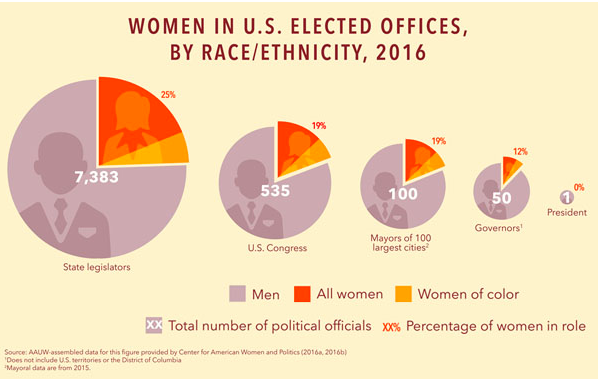Hillary Clinton just cracked the glass ceiling, the name we've given the invisible barrier that keeps women out of the topmost positions of power. But it is far from shattered. Indeed, the glass ceiling hangs over the corridors of power in the United States like a toxic gas.
Even though women are nearly 47 percent of the workforce and a majority of the voting population, we are underrepresented in leadership positions in every facet of American life -- in business, politics, the nonprofit sector, education, religious institutions, the court system. In every case, men dominate.

Despite the amazing fact that for the first time, a major political party is set to nominate a woman for president, there's little indication that a power shift is anywhere near imminent.
"We’re very excited to see this particular glass ceiling broken," Serena Fong, vice president of government affairs at Catalyst, told The Huffington Post.
"But the glass ceiling and the concrete ceiling, as it’s termed for women of color, are still in place," said Fong, whose nonprofit organization aims to advance women in the workplace.
Women are kept out of leadership roles by a web of frustrating nonsense, according to an overwhelming amount of research on the subject and conversations HuffPost had with the analysts, consultants and experts who think about gender and work.
These factors include deep and pervasive stereotypes about what a true leader looks like (white and male) and what women really want and are responsible for (babies and families) and how they should behave (nicely, no yelling!). The road to power is also blocked by long-established networks in which men mentor and support the advancement of those who remind them of themselves.
If Clinton actually becomes president, then it's possible she'll have a transformative effect on our notions of what a leader looks like. You can't be it unless you see it, as the saying goes.
"Certainly having a woman president conveys to the world, but in particular to citizens of the U.S., that women are capable of achieving and holding a position of power in ways that will be consequential for them and for the world," Robin Ely, the faculty chair of Harvard Business School's Gender Initiative, told HuffPost earlier this year. "I think it puts in our mind a different conception of what it means to be a leader."
Still, change is not going to happen quickly. Though women have seen progress over the past decades and now graduate from college at a higher rate than men and enter the workforce roughly at parity with men, they still do not advance up the ladder at the same rate.
Only 4 percent of CEOs at S&P 500 firms are women, less than 20 percent of corporate board seats are occupied by women and the wage gap is still firmly in place, Fong noted. "This is all evidence that we still have a long, long way to go," she said.
Just this week, Fortune magazine announced that the number of female CEOs on the Fortune 500 declined last year, falling to 21 from 24 the previous year. Only one woman runs a top 10 corporation on Fortune's list: Mary Barra at General Motors.
In addition to stereotyping and discrimination, women in business face systemic barriers to advancement, Fong notes. At a lot of companies, male managers will not offer women the opportunity to take on overseas roles -- necessary to jump to the C-suite -- because they assume women would prefer not to move their families, she said.
Another study from Catalyst found that women with business degrees were tracked into staff positions in the corporate sector while their male peers got coveted profit and loss roles, which lead to faster-track advancement.
"We're conditioned to expect men to be leaders and leaders to be men," said Kevin Miller, a researcher at the American Association of University Women and the co-author of a devastating report on women in leadership the organization released earlier this year.
The report contains a blur of depressing statistics that show that the bias against women leaders isn't confined to buttoned-up corporations or the Senate. Even in the nonprofit world, where there are more women, they are still underrepresented in leadership positions. Only 21 out of 151 nonprofits in Massachusetts had boards with at least 50 percent women, the report notes. Even in primary and secondary education -- where women dominate -- they vanish at the top. Look:

In politics, it's similarly bleak, as the AAUW report highlights. Women hold a little less than a quarter of state legislative roles. They make up 19.3 percent of the members of the House of Representatives. There are only 20 female Senators. Only six U.S. governors are female. There has never been a female U.S. Treasury secretary. And you know the deal with the president.
Women who run for office do just as well as men, Miller said. "They succeed at the same rate. But women don't put their name forward, they don't run," he said.
But a woman who runs, more than once, and finally nabs the most coveted electoral position in the country and possibly the world -- well, that could change something, he said: "Having a woman president could be transformational."

